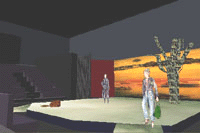
VIRTUAL THEATRES
Abstract
Der Artikel gibt einen Überblick über virtuelle Theater im Internet. Nach einer kurzen Erörterung verschiedener Entwicklungstrends (Datenbanken, intelligente Bühnen et cetera) erfolgt eine Beschreibung verschiedener Projekte sowie eine Wertung ihres Nutzens für Lehre und Forschung. Besondere Beachtung gilt der virtuellen Rekonstruktion historischer Theater.
Theatre is an interactive multimedia composition. Here, the joint effects of action and text, sounds and lighting, stage and costume design produce a highly complex art form. How do we convey a sense of such diversified kinds of information once a performance is over? What are the ways of representing and integrating a complex set of dramatic knowledge? Such issues have consequences for both teaching and research within the field of theatre.
The traditional confines of academic publication do not encourage a holistic approach to representing dramatic knowledge. For instance, how exactly do dancers move in an opera or a play? A verbal description will inevitably appear lengthy and clumsy. Choreographic notations contain precise movement information but speak to specialists only, excluding the average student of literature and drama. How did a masked Greek actor sound in classical tragedy? It is difficult to provide an answer through the medium of the book. A written, illustrated publication remains the academically most prestigious approach but reduces the multimedia character of a performance.
The teaching of drama within literature departments usually consists in seminars and lectures. These may combine different resources, such as texts, music samples or videos. Direct learning experiences by doing (voice training, acting, directing), trips to select performances or specific theatre buildings, and workshops with theatre professionals remain the exception rather than the rule. While students would undeniably profit from a hands-on approach, such events are expensive and may accommodate a small group only. We should therefore look for efficient, alternative methods of communicating the multidimensional appeal of drama.
Encouraged by recent technological developments and growing student computer literacy, universities have launched research programmes to represent drama in the new media. The challenging task ideally consists in integrating and mediating diversified kinds of knowledge: texts, movements, sounds, lights, and the even more intangible relationship between performers and spectators or listeners. It is technically possible to produce a virtual theatre, using a variety of techniques: footage of real actors, scenes and buildings; animation, audio and architectural software; and digital rendering tools to control lighting effects. Locations, sets, and, to a certain extent, performers, can be simulated. Displayed online, results could be made accessible to a wide number of people at the same time. While significant financial and technical resources will be needed to get started, student users might not have to invest in software to use a virtual theatre: a range of free VRML (Virtual Reality Modelling Language) browsers and decompressing software facilitate the streaming of even large 3-D animation files;[1] transmission speed and storage space have significantly improved in recent years, and capacities will continue to increase dramatically.
Among the various projects attempting to transform the dramatic experience and create a virtual learning environment, the following trends might be identified:
• The creation of large databases of dramatic texts, complete with images, video and sound clips.
• Online tutorials on theatre and film.
• The creation of synthetic actors (so-called synthespians or avatars). These may have a certain set of skills, move in a virtual environment and interact with other characters. Virtual actors may be three-dimensional; it is also possible to ›dress‹ them. Such avatars derive from either simple templates of humans provided by programmes (Poser, Realpeople) or from filming or scanning a real person and constructing from such data a virtual model.
• The reconstruction of historical sites or past performances. Heritage is a major theme for both theatre history research and museums and exhibitions. Virtual ancient theatres may be reconstructed in 3-D, fully coloured and lit, and users may navigate within the site, using the mouse or certain keys.
• The creation of intelligent virtual environments with a sound and light profile. Theatre spaces which change according to the commands of the user not only represent an attractive tool for teaching drama but also appeal to professional stage designers and producers of commercial architecture and game software.[2]
• The blending of actual and virtual performance. Student productions increasingly use a combination of different media, for instance, computer-generated backdrops versus real performers.
• The transmission of performances or 3-D spaces to remote audiences. From home or the university studio, viewers follow the action with a headset which suggests to them a 3-D space with performers. As an alternative, users may immerse themselves into a 3-D environment, as, for instance, a CAVE. These experiments are still very much work in progress.[3]
The present survey takes a closer look at a select number of current research projects and web resources. It examines their mission statements, their aesthetic appeal and their accessibility. Are ›virtual theatres‹ in their current evolution useful as teaching tools, and are they impressive in terms of research?
With the Shakespeare Electronic Archive, the English Department at MIT has created one of the most comprehensive drama sites worldwide, complementing the complete texts of Shakespeare's works with images and films.[4] Copyright issues, however, restrict the full use of the virtual library to MIT students; select external users have access to most of its services by way of a password. The pilot project Hamlet on the Ramparts gives outsiders an idea of the concept. Next to the fully glossed text of the play, a parallel frame includes images of specific productions and movie clips (including rarities as Asta Nielsen's Hamlet). Online tutorials explain certain book formats and specialist terminology. Thanks to special software (MRAS), internal users may compose hypermedia essays in which they may include film sequences and images. Readers may appreciate that student work contains not simply a written analysis but also the illustration or performance the text refers to.
The cut-and-paste approach to resources might, however, favour an uncritical accumulation of material rather than encourage students to focus on relevant points – a variant of the old problem of plot summary versus analysis in essay composition. Furthermore, since the techniques rely on downloading and copying, online learning activities should go along with face-to-face instruction on correct citation. (MRAS already contains an extended citation option, yet the fact that the software handles this for students does not cultivate their deeper understanding of the methodologies involved in properly crediting artistic or scholarly work.) On the other hand, the Electronic Archive and Hamlet on the Ramparts offer students a lively multimedia access to Shakespeare. An excellent distance-learning tool, the site enables users to actively choose a range of widely different materials and integrate them in their own work. It does not necessarily compete with literary texts but might even lead disaffected students back to the books: the Electronic Archive stores high-resolution scans of the early editions of Shakespeare's work.
Based on a small local theatre, a 3-D virtual stage has been designed by the Advanced Computing Center for the Arts and Design at Ohio State University.[5] This facility allows users to navigate within the theatre and to inspect the stage from various ›seats‹ in the auditorium. Virtual performances may be mounted under the interactive control of the user-as-director: he or she may control lighting and certain design elements, and manipulate standard properties (chairs, boxes et cetera) and simple representations of actors.

Fig. 1. Illuminated stage with performer. Source: Advanced Computing Center for the Arts and Design, The Virtual Theater Project.
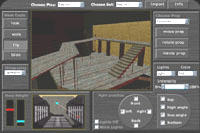
Fig. 2. Virtual Theater interface at OSU. Source: Advanced Computing Center for the Arts and Design, The Virtual Theater Project.
A similar application is being developed at the Central Saint Martins College of Art and Design, The London Institute. Chris Dyer's Virtual Stage (1999) serves as a digital drawing board to facilitate stage architecture drafting.[6] The project aims at benefitting students and architects with a tool to develop their own stage with properties and light and sound effects in 3-D. Dyer's model is as yet not fully functional. At this point, users may manipulate the intensity of stage and auditorium lights, choose between four viewpoints, and rotate actors and properties. The Virtual Stage also contains a fly gallery and a safety curtain.
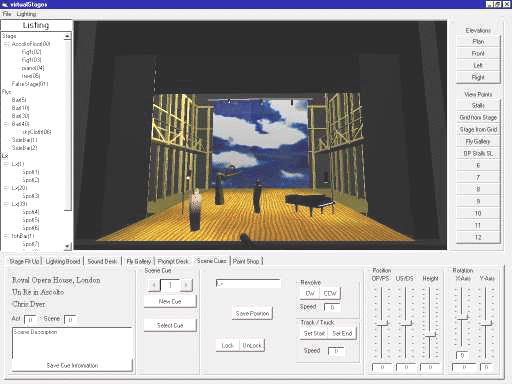
Fig. 3. The Virtual Stage: the Cochran Theatre, London, with performers. Source: Virtual Stages, The London Institute.
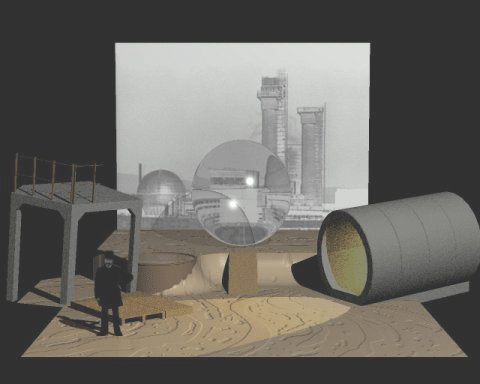
Fig. 4. Another computer model for The Tempest, Deutsches Schauspielhaus, Hamburg (1991), and English Shakespeare Company Tour (1992). Source: Virtual Stages, The London Institute.
As such examples show, assembling a simulation saves time in comparison to the construction of a real model. Changes can be reversed, alternatives tried out more easily. Students may gain a first experience in designing and directing without having to rely on small-group tuition or available performance spaces. Such interactive tools enlarge the confines of traditional teaching, and multiply the efficiency of resources use. At OSU, the system benefits some 1300 people in regional campuses, while the original theatre, on which the simulation is based, seats some 250 spectators.
Interactive multimedia environments may allow for both technical and creative roles beyond dimming the stage lights. For instance, as ›director‹, ›playwright‹ or ›actor‹, the user may give instructions to other virtual agents who react to these commands. The Virtual Theater programme at Stanford University is interested in adaptive intelligent systems.[7] In this context, efforts focus on ›life-like‹ qualities of synthespians (such as idiosyncratic facial expression) and their ›improvised‹ actions. The choice of the word ›improvised‹ seems misleading since it suggests a humanly conscious, autonomous decision-making process. The computer, however, simply manipulates avatar action by a random operator.
A simple example might illustrate an adaptive intelligent system. In Animated Puppets, two synthetic characters, Nora and Aaron, talk and play with each another in a simplified landscape.[8] While a window displays the scene, a control panel enables users to manipulate Nora's (or Aaron's) actions and feelings. The choice consists between three general moods (ranging from sad to happy, tired to active, friendly to shy), a few sentences and sounds, and some basic activities such as jumping or sitting. The user may control one character while the computer takes on the other. Since the computer-directed avatar acts partly at random and partly in response to the user's input, an element of surprise and entertainment is preserved in what would otherwise become an over-determined script.
As an application, Animated Puppets might interest small children rather than students. Its visual sophistication remains far below that of computer games. The project, however, is not interested in perfect graphics but feedback, for it seeks to elaborate on user-computer interaction and ›improvisation‹. Refined future approaches may lead to avatars with a wide range of facial expressions, moods and actions, which in turn will result in more satisfactory communication between humans and virtual respondents. This kind of research has not only commercial implications, for instance, in internet shopping, where more life-like virtual assistants might encourage customer spending. On an academic or educational level, such techniques might enable students or actors to rehearse a role with an intelligent virtual counterpart commanding over a range of different performance registers. Already now, participants in remote locations join for multi-user games in so-called LAN parties, where they control avatars. Characters more sophisticated than the fighters found in games could lead to new forms of dramatic art, for instance, online performances in a virtual theatre, directed by remote control.
Other approaches focus on media-controlled real performance spaces. Thus, the Intelligent Stage project at Arizona State University maps elements of the setting to the movements of actors. Based on signals from video cameras which monitor the performer, the stage may change lighting, sound, or the structure itself.[9] Other experimental virtual/real setups are co-ordinated by the Kent Interactive Digital Design Studio at the University of Kent (KIDDS).[10] Past productions have revived techniques as they were employed in 3-D cinema in the 1950s, and blended them with digital models. Equipped with 3-D glasses, audiences watched students acting before holographs, projections of stereoscopic virtual images. In a production of Shakespeare's A Midsummer Night's Dream (2000), the forest near Athens transformed into a cyberspace location for confused lovers, complete with digital fairies, while the grove of Oberon and Titania resembled a computer chess game.
Often simulations pretend to be ›real‹ with adverse effect – users realise too well that the scenario in view is computer-generated. KIDDS performances have gone the opposite way, by humorously confronting real with virtual elements, and adding the further dimension of production techniques from several periods. Media-literate students will appreciate hybrid performance elements and become more sensitive to the impact of technologies on the way we perceive theatre. As the organisers explain, the intention is to make »the medium not just a conveyor of the concept but a part of that concept«.[11]
A number of projects are dedicated to the reconstruction of historical theatres and performances. KIDDS has produced a beautiful animated simulation of Adolphe Appia's 1892 designs for Die Walküre. Information as to the original location of the performance has been made available with a model of the interior of Wagner's Festspielhaus at Bayreuth. Thus the site links a historical performance to the space for which it was intended. Stills include the stage settings under different lighting conditions.
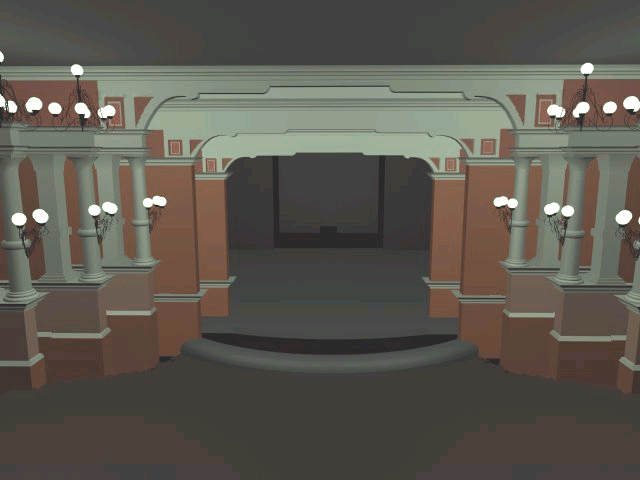
Fig. 5. Virtual model of the Festspielhaus, Bayreuth. Source: KIDDS, projects, historical.
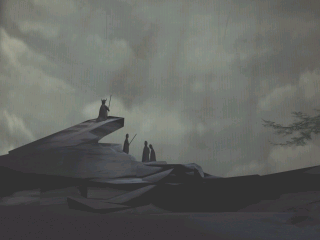
Fig. 6. Adolphe Appia's production of Die Walküre (1892), at the Festspielhaus Bayreuth.[12]. Source: KIDDS, projects, historical.
At times KIDDS heritage projects mention sources; they also explain some technical decisions, such as the choice for radiosity in lighting (a rendering process appropriate for indirect illumination) rather than ray-tracing (a method producing hard contrasts). The overall approach is, however, not systematic. In the case of Die Walküre, a little more background information would have been helpful. The Swiss theatre designer Appia (1862-1928) lived in an age which introduced electricity in playhouses and produced an explosion of new media (laterna magica, cinematograph et cetera). His innovative treatment of stage lighting as an active element in performance lead to the idea of ›gestaltendes Licht‹. In Appia's productions, Wagner had the lights switched off in the auditorium so that all efforts concentrated on the stage. Appia's ground-breaking work Die Musik und die Inszenierung (1899) revolutionised the staging of opera: the designer regarded actors as objects of light and shadow. A kind of visual music, they represented notes in a composition of light.[13] Impressive as KIDDS's reconstructions after Appia are, surfers visiting the site will not deduce Appia's theoretical concerns therefrom. Only solid background information elevates such samples beyond the status of pretty pictures.
Other sites specialise in a technical explanation of early stage design and machinery. A virtual library at Appalachian State University is dedicated to the study of Renaissance and Baroque special effects. It offers a rich range of inventions by early modern stage architects such as Sabbattini, Danti and Furttenbach.[14] Here, viewers can download simple QuickTime animations to see baroque flying machinery, sea storms, and thunder in action. In line with the unpretentious approach of the site, the computer graphics are basic but informative, and certainly offer sufficient documentation for students who have never before been in touch with early music and drama.
Visual quality is a key issue in the accurate rendering of buildings. Thus, the Foundation of the Hellenic World (Athens) provides a high-end 3-D model of the theatre of Miletus (Turkey), together with a walk through the ancient city which flourished between 400 BC and 200 AD.[15] Other approaches aim at a photorealistic effect. A collaboration between the Open University and the BBC Shakespeare Multimedia Research Project has resulted in the The Globe Theatre Virtual Tour.[16] With a QuickTime browser, visitors may surf a digital version of the Globe Theatre, London, a reconstructed public playhouse from Shakespeare's time which has been rebuilt and now accommodates some 1500 people. Wide-angle images provide a glimpse of the site from various points of view. Anachronisms such as fire extinguishers have been removed from the virtual Globe. Users find themselves at the centre of the theatre, while the animation (images based on photographs) takes them on a 360 degree panorama tour round the theatre. During that tour, users may zoom in for a closer view of the balconies. The facility, it is claimed, allows surfers a glimpse of the Globe »from the widest possible selection of view of YOUR choice«; the work creates »the most authentic possible space and experience of moving through that space, while using the most up-to-date equipment and technology in order to achieve this vision«.[17] This is a little over-confident, for viewers follow a simple, pre-determined track; if they zoom in, images become blurred since the resolution does not increase with a close-up.
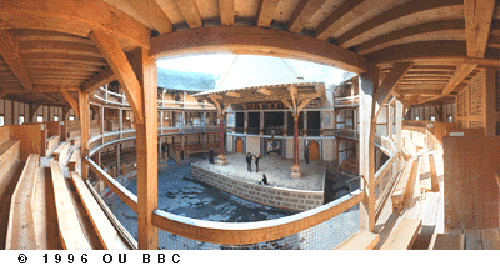
Fig. 7. The Globe; stage seen from the balconies. Source: <http://www.open.ac.uk/Arts/shakespr/graphics/glb5.gif>
The Globe Virtual Tour is purely visual. An acoustic panorama might be an interesting future addition, given that recent work on the acoustics of early modern drama has shown that wooden Elizabethan theatres worked like gigantic instruments, amplifying the actors' voices.[18] For the time being, students who cannot afford to see the Globe in real size will benefit from the excellent optics of its virtual counterpart and gain a fair idea of the dimensions of an early modern theatre. Thus, the online model works as an appetiser for a commercial CD-ROM, soon to be released, which will include images and texts relating to Shakespeare's time.
The most ambitious online heritage project is Theatron, produced and commercialised by the Theatron Consortium, partly funded by the European Commission, and co-ordinated by the University of Warwick, UK (duration 1998-2001).[19] Backed with a grant of some £500.000, Theatron aims at designing twenty navigable 3-D models of European theatres of various periods, as for instance, the sites at Epidaurus, Sabbioneta and Drottningholm. Users may not only view the stage from different positions, specific theatre models feature audio reconstructions, enabling the user to perceive what the audience would have heard from different parts of the theatre.[20]
Theatron boasts a »novel« concept, an integrated, real-time 3-D viewer with contextual information (photographs, maps, animations, sound clips et cetera). This viewer will be available on CD-ROM (release expected for September 2002), and subscribers may access an online version for updates. For the time being, the site offers still images and a 360 degree virtual tour in the Bouleuterion at Arriasos to curious visitors.
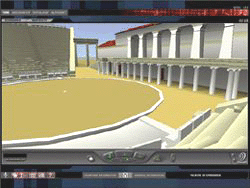
Fig. 8. Theatron interface. Source: <http://www.theatron.org/ec.html>
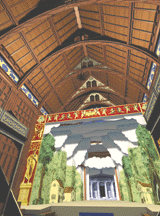
Fig. 9. Inigo Jones, design for Florimène (1635). Source: <http://www.theatron.co.uk.>
As the present survey shows, Theatron is certainly not, as claimed, »the first serious attempt to bring the study of virtual reality computer models within the scope of a humanities subject«, nor is the idea of a 3-D integrated VRML browser really a »novel« concept.[21] Walkthroughs have for some time been a standard feature of both architecture software and a number of Anglo-American university projects. Yet the comprehensive approach of Theatron, its concern for background material and an overall neat presentation are likely to result in a compelling resource.
Given the high visual quality of Theatron's virtual theatres, they may serve as an appropriate example to discuss the advantages and problems of a computer-generated reconstruction. Thus, the gallery includes designs by the English architect Inigo Jones for a 1635 pastoral in the Tudor Hall at Whitehall. Even uninitiated viewers will immediately get a good impression of an English indoors theatre setting of the early modern period. The proportions are correct, the details painstaking, and the graphics have not been restricted to recreating the stage alone. ›Walking‹ through this structure, users will come as close to experiencing the dimensions of a lost early stage as possible without actually being there.
On the other hand, the stage is empty, but it was devised for performers, and only these give viewers a full idea of the dimensions of the performance space. Furthermore, the colours follow common sense rather than a historical source. In the 1630s, Jones specialised in clouds which were a spectacle in themselves, radiating in the brilliant colours of the sunset or even exhaling vapours. The intricate language of light in Jonesian productions does not correspond with Theatron's presentation. The surfaces are too clean, as if cribbed from standard CAD templates (such as »wood«), and the contrasts too strong, in particular in the bland clouds. In 1635, this space was dimly lit by torches and candles. The bright lighting in this application suggests spotlights mounted between the wings or even a daylight parameter. The aesthetics adopted by the Theatron team lead not so much to a seventeenth-century theatre but a game environment. Instead of a Baroque ballet dancer, we might expect Lara Croft to swing herself from the ceiling and kill an alien.
As with all other heritage sites inspected so far, Theatron silently passes over such issues. A project which so confidently boasts an authentic reconstruction should respect two aspects in particular: first, historical performance conditions affected stage design and therefore need to be taken into consideration. Furthermore, project coordinators must convey an awareness of how the means and media they use shape the outcome.
A prolonged discussion of technical decisions made during the process of reconstruction seems appropriate (Theatron does mention some of the software it uses). Any scrupulous reconstruction should indicate where creativity has stepped in for missing source information. All these aspects should be addressed and made available online to complement a finished product.
Multimedia resources available today offer us unprecedented opportunities for teaching and researching drama. This includes animations, interactive intelligent stages which respond to users-as-directors, and communicative synthespians. Digital simulations could elucidate the lost dimensions of historical theatre. They solicit creative experiments and provide excellent learning tools for a generation which is more familiar with videogames than calligraphy.
Web designers still need to make a decision between speed and visual quality: either virtual theatre scenes are elaborately lit and coloured (as in the photorealistic Globe Virtual Tour, Theatron, or Dyer's draft for the Tempest), or real-time movements and changing viewpoints require basic actors and properties (Animated Puppets, 3-D virtual stages at OSU and the London Institute et cetera). Even the best graphics remain below those employed in cinema; yet such a comparison seems unfair, given the budget differences, and visual standards will rise even in underfunded academic projects. In the foreseeable future, streaming and compression techniques will improve, facilitating quicker downloads, seamless viewing of large animation files, and real-time multi-player interaction in elaborate virtual environments. Life-like 3-D agents may as yet seem crude but could become part of future curricula and arts initiatives.
Fragmented in their approach as they are, current projects will eventually lead to large knowledge pools, virtual theatre libraries which contain static information (playbills, images, texts), kinetic information (animations, video clips, sound clips), and a strong interactive component (composition of library materials, tuition, evaluation of learning results). Used multidimensionally, the new media will provide a powerful, efficient virtual learning environment and complement face-to-face teaching.
Current virtual theatres demonstrate the interdisciplinary scope such projects encourage and indeed require. Involving architects, musicologists, stage designers, literary scholars and computer scientists, collaborative initiatives blur the boundaries of traditional disciplines. As much might be expected for the future teaching of drama, whether in a seminar or by distance learning.
Ideal virtual theatres should give equal importance to texts, movements, sounds and settings, as do real performances. Of the examples discussed here, Theatron and the Electronic Shakespeare Archive have most ostensibly embraced a holistic concept of multimedia teaching, not least due to generous sponsoring. There is, however, room for improvement.
In literary disciplines, certain procedures of good custom maintain an academic standard in editing and publishing. Conscientious scholars state transcription conventions, cite sources, collate textual variants, and conform to accepted layouts. Rules for book conservation such as printing on acid-free paper guarantee the sustainability of research outcomes. International fora such as the Text Encoding Initiative encourage emerging standards in electronic editions.[22]
The digital dimension includes, however, not only texts but other forms of information such as animations and 3-D spaces. In an edition of an early play, standard features (bibliographies, footnotes et cetera) enable readers to assess the content of the publication. In an online edition of a historical virtual theatre, there are no standards. In terms of sustainability, many online resources, whether texts or moving images, may disappear from the net from one day to the next.
As examples of online historical theatres at KIDDS and Theatron show, the technical standard may be very impressive, but a distinction between reconstruction and recreation has not been drawn clearly enough. Indeed, project managers seem to betray no awareness of the problem, or at least they do not discuss it in public. In both cases, virtual projects need to catch up with what has been a long-running argument in the Humanities (dance historians, for instance, keep debating whether the term ›reconstruction‹ may be used at all). Surfing historical theatres (or their machinery), users do not usually get an explanation as to how the designers arrived at their results and which programmes exactly they used. Yet each step leading to a virtual simulation represents a conscious choice from several options in a programme. Therefore, a scholarly apparatus with sources and a flow chart of technical decisions should complement serious future digital reconstructions, enabling users to distinguish between fact and fiction.
International initiatives such as Ariadne and the ISM Global Learning Consortium (a coalition of academic, governmental and commercial organisations) are already developing a common set of rules for the new media to define the internet architecture for learning.[23] Related organisations such as the Web 3D Consortium endorse the creation of open standards for web 3-D specifications.[24] Future multimedia learning resources will have to respect conventions across disciplinary boundaries; future virtual theatres, for example, might conform with norms established in literature, architecture, music and 3-D modelling. These new norms will not only affect digitally preserved knowledge in itself but its sustainability. In future, universities and other higher education institutions will have to guarantee for the preservation and conversion of digital resources.
Multimedia tools no longer require a traditional editor who determines the shape of a text but a number of competent sub-editors responsible for images, sounds, web design and the like. Looking at virtual theatres today, we only begin to realise what immense efforts lie in such an undertaking. In the long run researchers will desire a full and fair appreciation of their web-based, computer-generated materials. The prestige gap between a printed book and a web resource will eventually disappear thanks to emerging multimedia standards.
Barbara Ravelhofer (Princeton)
Dr. Barbara Ravelhofer
Department of English
22 McCosh Hall
Princeton University
USA-Princeton, New Jersey 08544
bravelh[at]yahoo.co.uk
(1. Oktober 2002)